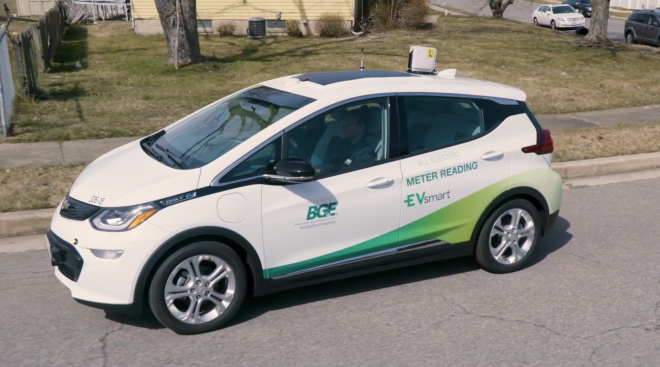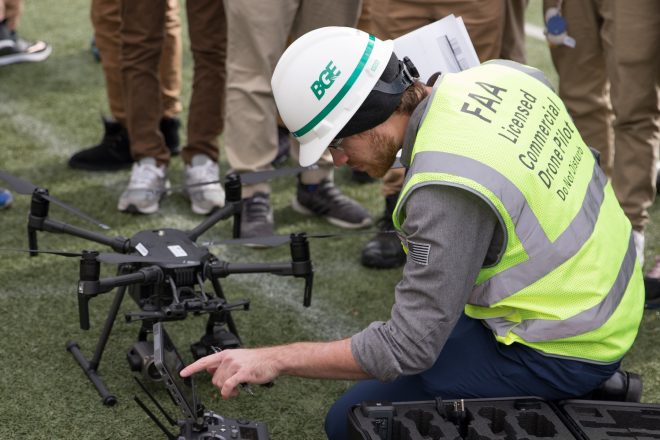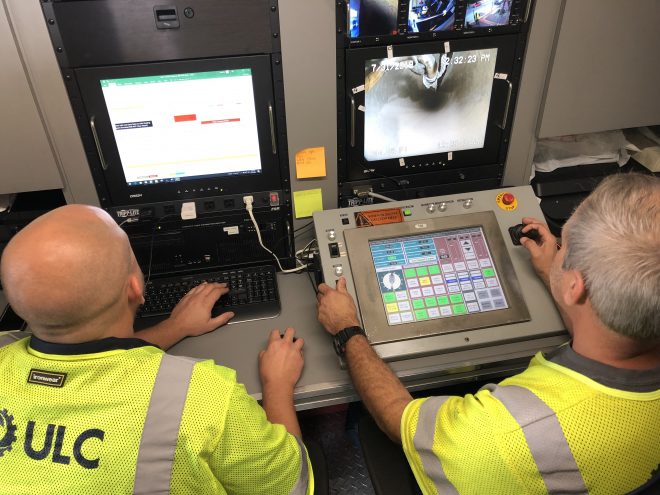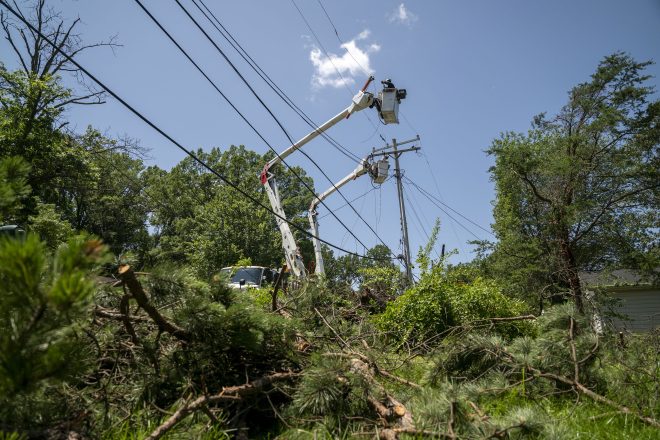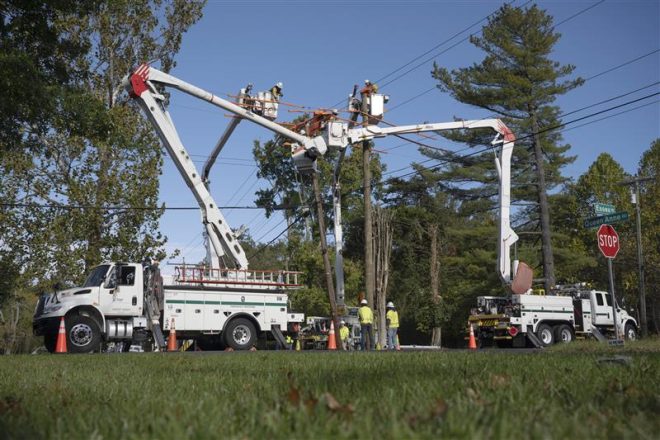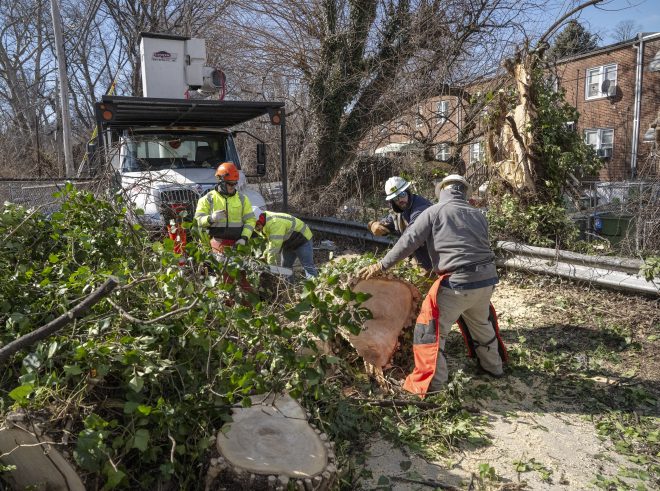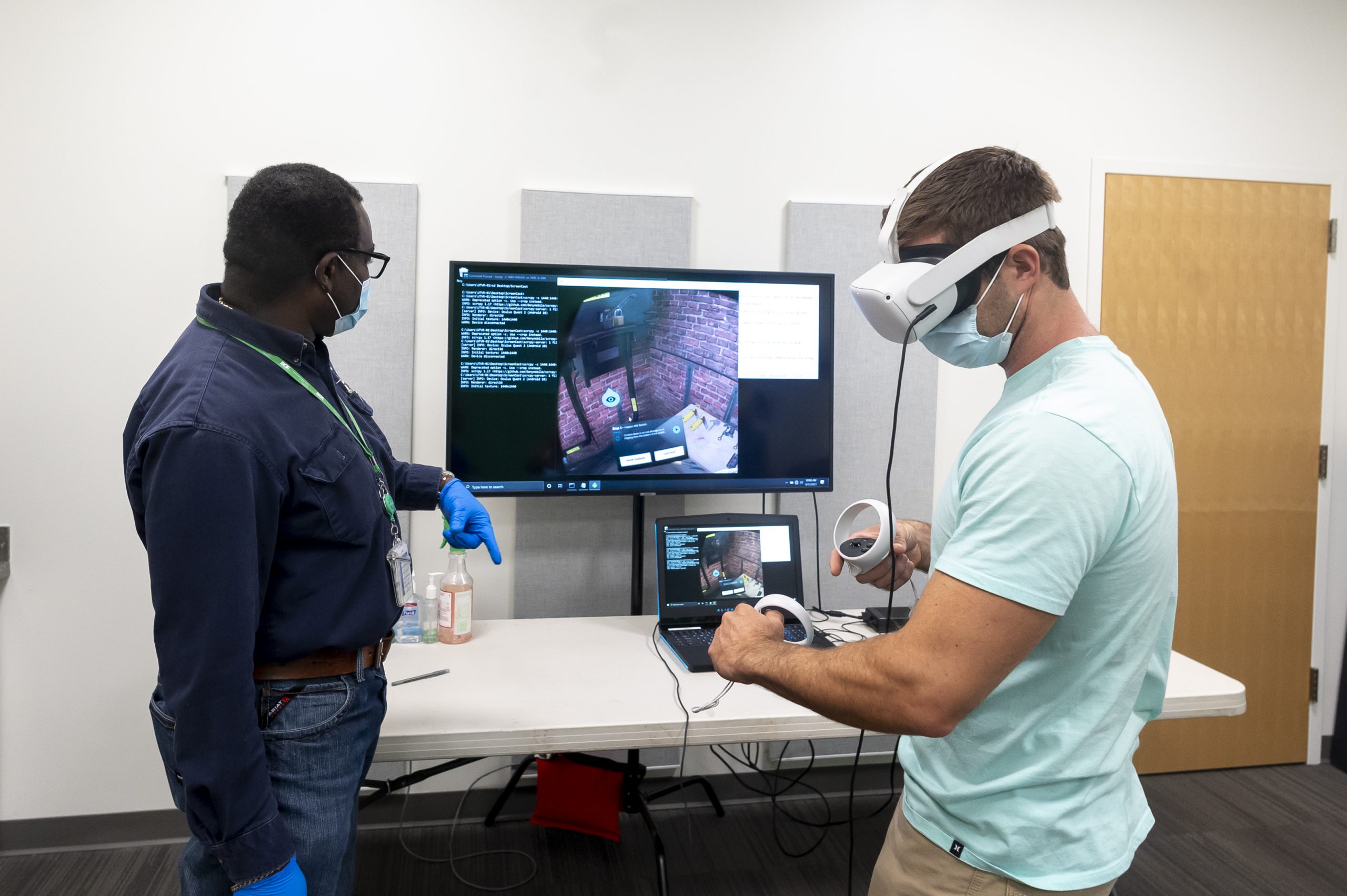
Joe Braun is always looking for a better way to do things. When he realized that virtual reality – something video gamers know well – could give employees valuable experience, he worked with BGE’s training department to incorporate VR into its coursework.
Joe Braun knew he wanted to work for an electric utility since he was 12. As a boy, he often went outside to talk with BGE crews working in the neighborhood. Today, at 25, he already has experience as an electrician and a BGE crew leader, and he is pursuing a Bachelor’s degree.
And he is always thinking about how to improve things.
“BGE,” Braun said, “and my leadership in underground lines always wants us to think about the safety culture. So, I’m always thinking 10 steps ahead: What can we do differently so we can work more safely?”
Braun is an underground lineworker. Like all BGE lineworkers, he maintains, repairs and installs electric facilities to keep the system operating safely and reliably. While we are used to seeing BGE employees climbing poles and working on overhead wires, we can’t see the work Braun and his co-workers do, because they spend a lot of time in manholes. In fact, most of the Baltimore’s electric infrastructure is located underground.
Braun initially got the idea of taking 360o photos of manholes to help employees in training sessions see what the installations look like. Once the photos were available, he realized the next step was to explore the practical applications of Virtual Reality (VR).
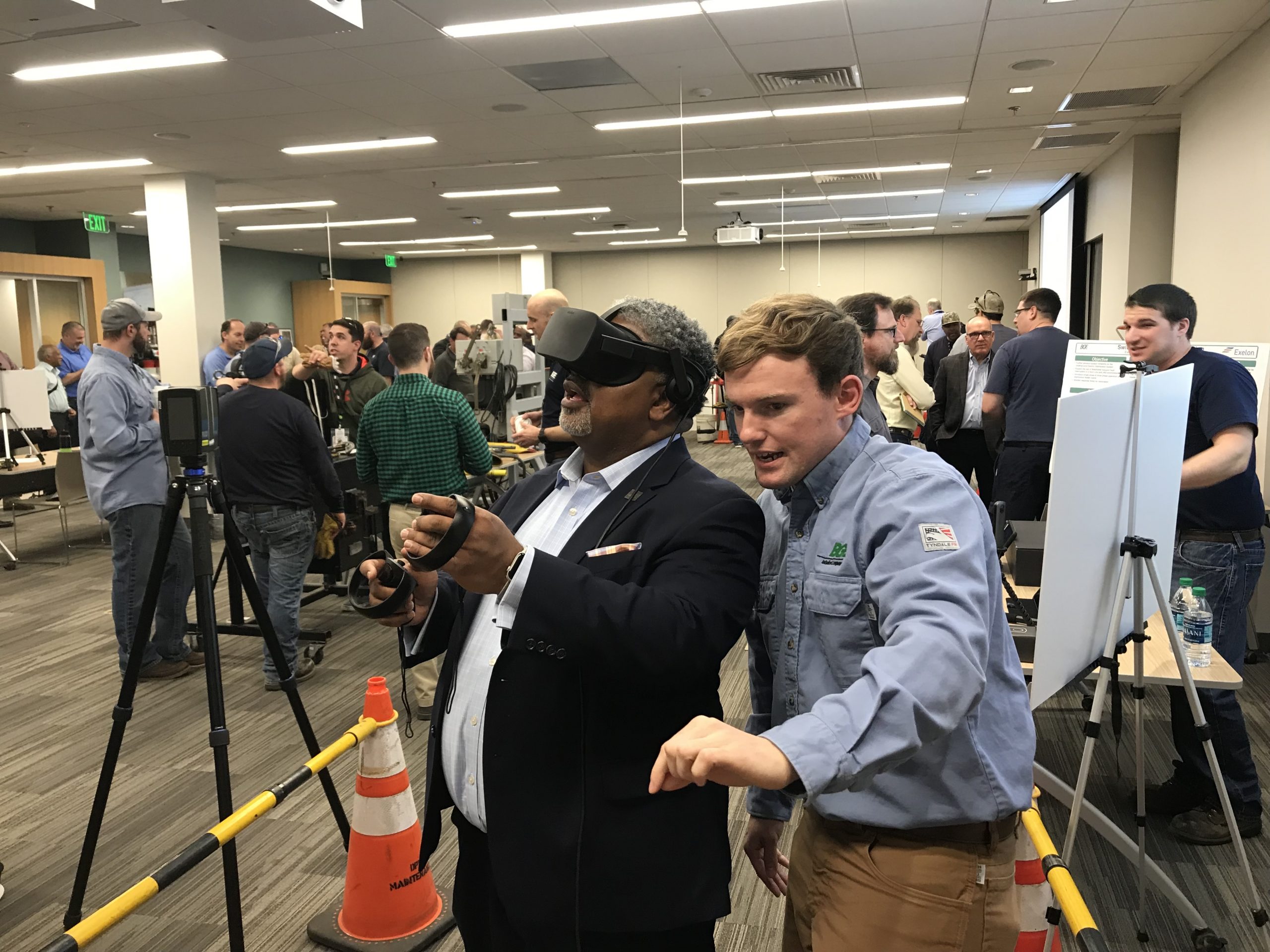
Braun shows off the VR technology during a pre-pandemic expo
He imagined an employee in a training facility donning a headset and seeing the manhole – from the inside.
“I thought it would be really cool to scan those photos and let people see what it’s like to work with underground switches and transformers. I’m fortunate to have really supportive leaders in underground lines who saw the vision and encouraged us to make it happen.” Then he imagined them virtually interacting with the images they see projected by their VR goggles.
Braun began working with Hisam Eltahir, a senior training specialist at BGE’s White Marsh Training Center. Eltahir had seen a VR demonstration at an Exelon innovation conference, and was eager to pursue the possibilities.
He contracted with Deloitte Digital to design a company-specific VR program that would be more comprehensive than the one he saw demonstrated.
After most of a year of planning and development, Eltahir began testing the program on experienced BGE trainees. “We wanted to make sure the process is faithful to the actual practices.”
Braun envisioned it as “giving a pretty realistic sense of the experience,” of energizing and de-energizing switches and performing other essential functions. In addition, he said, “The program quizzes you about what you’re seeing and asks what you need to be doing,” to make sure the trainee is observing and comprehending, beyond just following instructions.
The virtual experience starts outside the manhole, and through their headsets, the employees see what it looks like to approach an underground installation. Then, Braun said, “They have to check what they are seeing matches the written documents they have been given to make sure they are in the right manhole.” (Every manhole is slightly different.)
They then use a handset to practice the tasks they will be expected to perform. The program also walks trainees through all work practices and safety protocols relevant to the situation.
Braun believes that all training should be geared to the different ways people learn. Some people need verbal instructions, others prefer reading, and some learn best when they can use their hands. VR offers it all. Braun said VR tools are a great addition to conventional training methods.
Eltahir said all who have tried the system respond positively. Those who had worked in manholes confirmed it was a very lifelike experience.
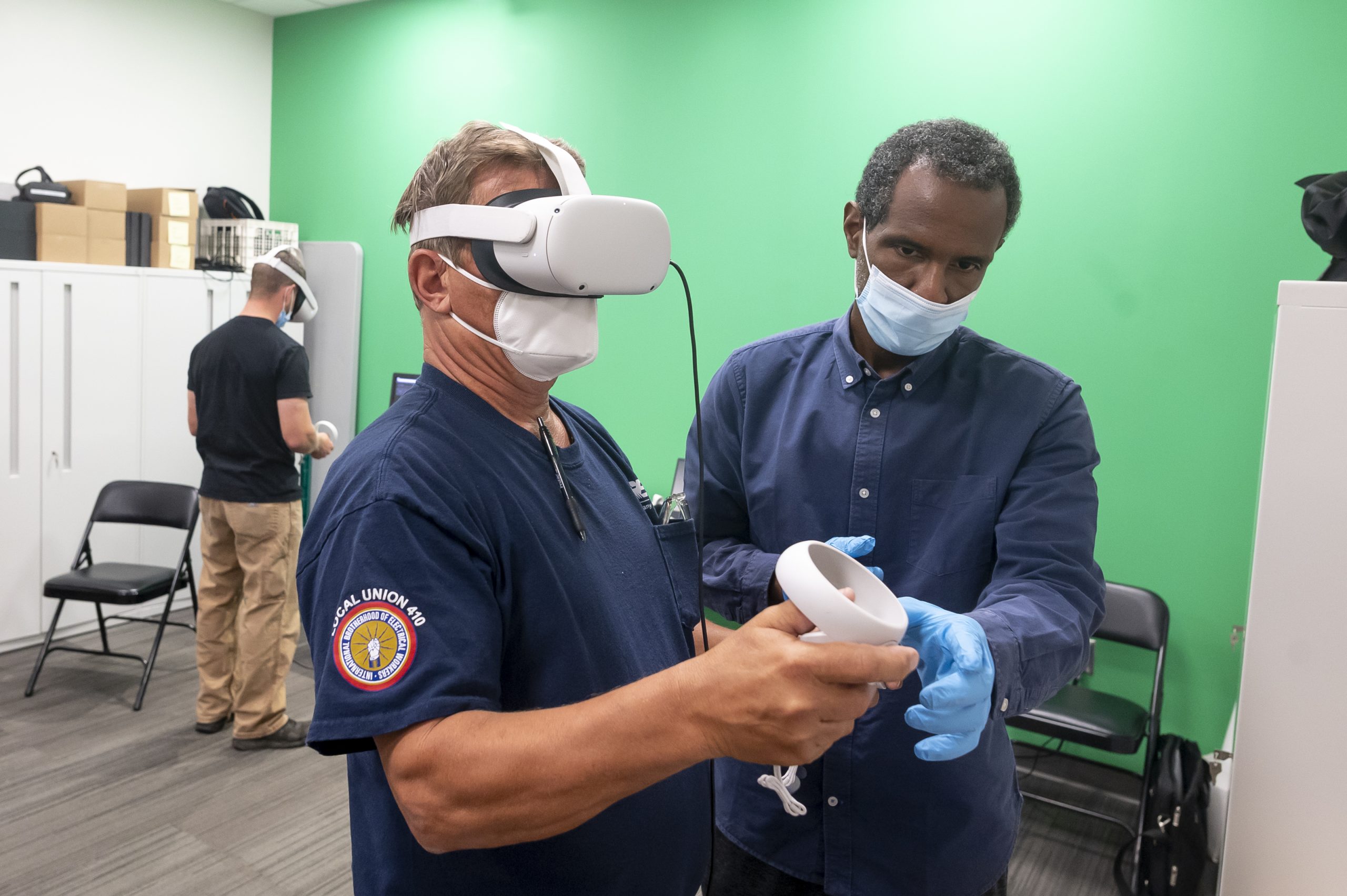
Eltahir guides an underground lineman through training on the VR system
As might be expected, Eltahir said the younger employees picked it up quickly. “Several were gamers or have apps on their phones” that made them comfortable with the technology.
A baby boomer he has been working with was hesitant to try, “but he picked it up quickly, as well. He was very proud of it, too, and now he can relate to his grandson,” Eltahir said.
As a result of BGE’s work, ComEd—BGE’s sister utility in Chicago—is now interested in pursuing VR for training. “I think it will be the wave of the future, because it’s safe and risk free. The technology is pushing training in the right direction,” Eltahir said.
Braun’s next idea is to collect 360o photos of the inside of every manhole on the BGE system for use with the VR training. As always, he is still thinking of ways to help BGE employees make the system safer and more reliable.

